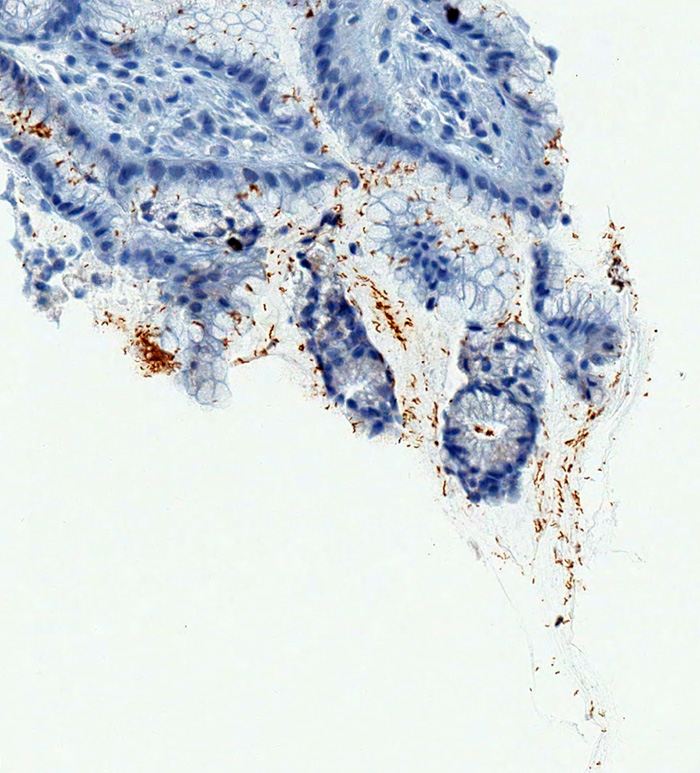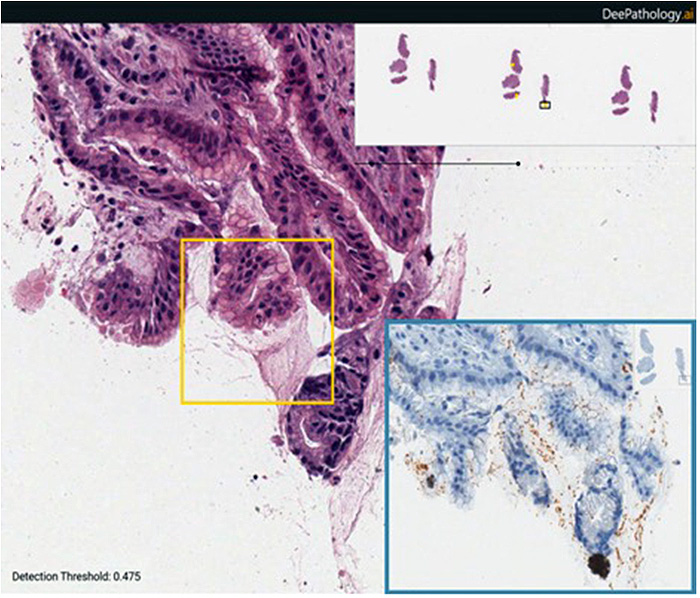
FINAL DIAGNOSIS
Helicobacter pylori gastritis
TREATMENT AND FOLLOW UP
The patient felt better after treatment with a triple therapy regimen including omeprazole, amoxicillin and clarithromycin. A urea breath test performed at follow up examination was negative.
DISCUSSION
Helicobacter pylori (HP) is a gram-negative bacterium that causes chronic gastrointestinal infections and has been shown to infect up to half of the US population at age 60 [1]. Rates of infection increase with age and is more prevalent in blacks, Hispanics and Asians [1]. In 1983, Barry Marshall from the Royal Perth Hospital in Western Australia famously developed halitosis, nausea, and abdominal pain after ingesting a broth containing HP cultured from an infected patient [2]. This was done as an attempt to fulfill Koch's postulates to prove that this organism was linked with gastritis [3].
Histologically, HP can be identified as curvilinear bacilli which can be found in gastric mucosa and may be associated with: increased chronic inflammation in the lamina propria and neutrophils in the mucous neck zone (chronic-active gastritis), germinal center formation with micro-erosion of the surface epithelium (formation of mucosal-associated lymphoid tissue [MALT]), and a "chronic-superficial gastritis" characterized by chronic inflammation of the superficial mucosa [4]. The formation of MALT in the stomach is associated with HP that may eventually develop into MALT lymphoma [5]. Routine H&E sections have been shown to have HP detection rates of around 66%, whereas immunohistochemistry has been shown to be much more sensitive and specific [6]. The specimen in this patient was found to be positive for HP by immunohistochemistry (Figure 2).
Figure 2. Immunohistochemial stain showing abundant positive H. pylori organisms.

Using a deep learning algorithm specialized in the detection of these organisms provided by deePathology.ai (https://deepathology.ai) [7], HP was also positively identified (Figure 3). Deep learning uses neural networks composed of nodes to process information in a manner similar to those found in biologic neurons found in our nervous systems [7]. Inputs are fed into a node from other nodes, which performs a computation and fires a result to downstream nodes [7]. This technology has yet to be fully evaluated, but could be a valuable tool for the pathologist in the near future.
Figure 3. Detection of H. pylori using the DeePathology.ai deep learning algorithm. The yellow box is the region that was identified by the algorithm where organisms were detected in the whole slide image. The lower right inset shows immunohistochemical confirmation of H. pylori.

REFERENCES
![]() Contributed by Robin Dietz, MD and Liron Pantanowitz, MD
Contributed by Robin Dietz, MD and Liron Pantanowitz, MD